‘Why?’: Horror e-bike injuries revealed
Serious injuries have skyrocketed in one Australian hospital as a troubling new trend sweeps the nation.

E-bike and e-scooter injuries have risen a whopping 300 per cent at a major Australian children’s hospital, as the troubling toll the trendy riders are having on under 18s is revealed.
Injuries at The Children’s Hospital at Westmead in Sydney’s west have skyrocketed on the back of the increasingly widespread use of e-transport by kids, The Daily Telegraph reported.
According to the report, hospitalisations of children at the medical facility due to accidents on e-bikes or e-scooters for children jumped from six in 2023 to 24 last year.
The majority of incidents involved riders hitting stationary cars or being hit by moving vehicles.
Swinburne Professor of Future Urban Mobility Hussein Dia wants to know ‘why’ kids are using these motorised modes of transport with seemingly no rules or regulations in place.
“The increase from six children hospitalised in 2023 to 24 children hospitalised in 2024 in Western Sydney is alarming,” Mr Dia said.
“In other states where regulations have been put in place around shared e-scooters and e-bikes, it is illegal for children under the age of 16 to be riding them in public areas.’
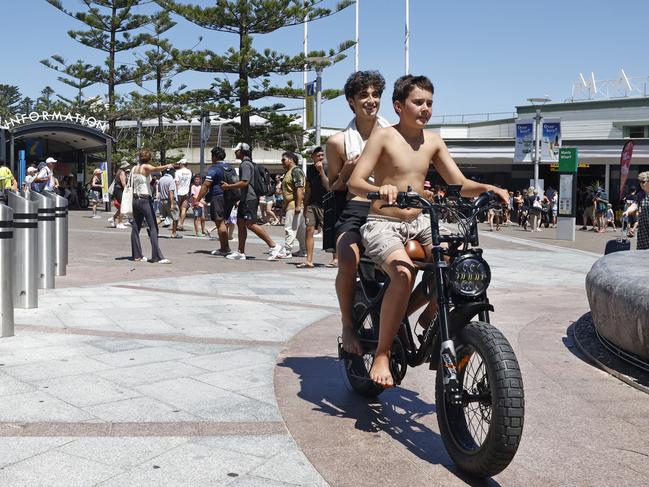
“These are not toys – with an electric motor they can go very fast. Some of the devices on sale for private use can travel at speeds up to 45 kilometres per hour.
“With commercial schemes, there are regulations around maximum speeds at which they can travel (e.g. 20 km/h), the mandatory use of helmets, and where they can be driven.
The shocking data comes as calls increase for NSW politicians to legislate on the use of e-mobilitiy devices.
“For private use, most regulations say that children under the age of 16 are prohibited from riding them anywhere other than on private property, but this data shows that children are still riding them in public and most of the injuries are children without head protection,” Mr Dia said.
“These forms of e-mobility are important in our efforts to decarbonise road transport, and they present good opportunities to replace car travel over shorter distances particularly commuting when used properly.
“But safety should remain the number one priority and for that we need to have strong regulations in place and better educational campaigns about their correct use.”
SURGE IN SERIOUS E-BIKE INJURIES
E-bikes have become the hottest new form of eco-transport, particularly for young ones.
They’re fun, fast, fashionable and relatively affordable.
But their rapid rise has also led to a surge in serious injuries and even death.
The issue isn’t just reckless riders, those who flout road rules, dumping of bikes and illegal modification.
But sensible riders who abide by the law and are still being caught in dangerous situations.
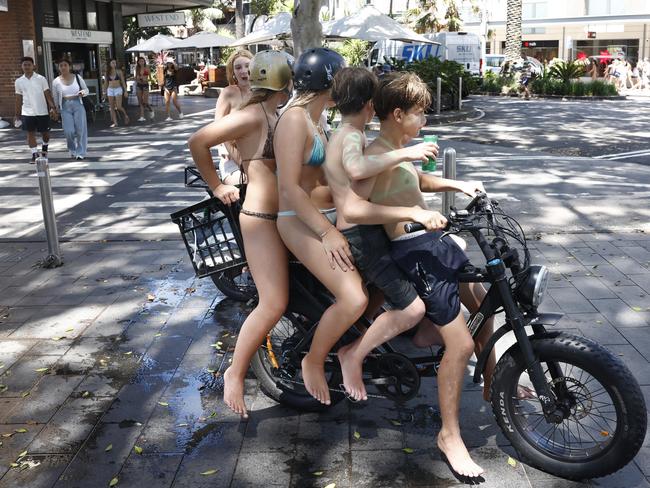
SURGE IN E-BIKE INJURIES
Across the country, reports of e-bike injuries are skyrocketing, particularly involving children and pedestrians.
A string of incidents in Queensland has garnered national attention.
Last month a five-year-old boy in Tugun on the Gold Coast was allegedly hit and dragged under an e-bike travelling at 40 km/h. The young boy spent four days in Gold Coast Hospital after the accident.
Last year the state recorded eight deaths related to personal mobility devices, including e-bikes and e-scooters, quadrupling the number from the previous year, with more than 3000 people presented to 26 emergency departments.
Victoria has also seen an extremely worrying spike in e-bike and e-scooter accidents and deaths. According to the latest report from the Victorian Injury Surveillance Unit (VISU) in September last year: “In Victoria, in the six-year period 2017/18 to 2022/23, there were 1680 ED presentations related to e-scooter injuries, 534 related to e-bike injuries and 564 related to (electronic) self-balancing device injuries.
MORE: Shock safety score for Chinese EV

“In this time period, e-scooter injury rates increased from 0.3 to 14.9 per 100,000 population, e-bike injury rates increased from 0.2 to 3.4, and self-balancing device injury rates remained stable around 1.5 to 1.6.”
Fractures, to the upper limb, wrist, elbow, account for the most common injuries, followed by head and neck injuries, according to the report published in Monash University’s Hazard magazine. Males aged 15-24 were the most likely to be injured in an e-bike accident.
MAJOR GAP IN E-BIKE INJURY DATA
However, experts warn that the numbers don’t tell the full story. Accurate, available and detailed data is limited due to inconsistent reporting.
Even VISU’s report acknowledges this: “The scope of this Hazard is limited to an analysis of Emergency Department presentations data sourced from the Victorian Emergency Minimum Dataset, and a fatalities report provided by the National Coronial Information System”, it reads.
And their study only covers deaths up until 2020.
“In the five-year period from 1 January 2016 to 31 December 2020, there were 14 deaths reported to an Australian State or Territory Coroner where an electric e-micromobility device, including e-bike, e-scooter and electronic self-balancing device, contributed to the death
Seven of the 14 deaths were related to e-bikes); 7 deaths were in Queensland and 5 in Victoria (by jurisdiction of investigation); 6 deaths were in the age group of 35–44 years; 5 were females.
MORE: The Monster truck Aussie roads just can’t handle
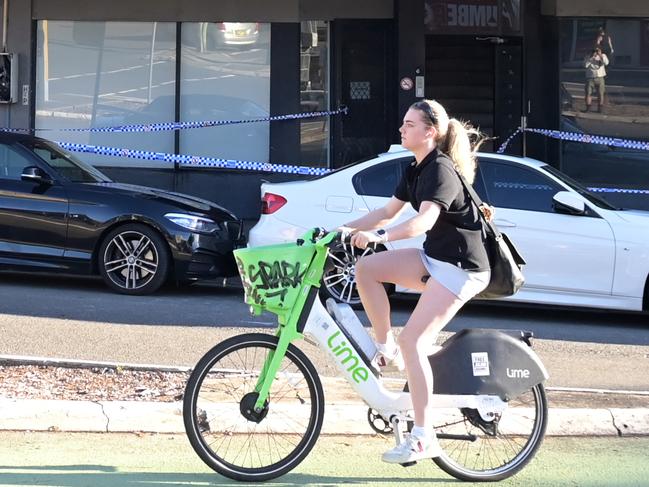
Often, e-bike injuries are grouped with other road users: motorcycles, bicycles and e-scooter therefore making it difficult to track its use, correlates of it and any injury or harm from it.
Even the leading institute whose research focuses on Personal Mobility Devices, the Jamieson Trauma Institute, does not collect e-bike data because e-bikes do not fall under that definition in Queensland as per the Transport and Main Roads rules for Personal Mobility Devices.
The University of Melbourne Associate Professor of Urban Resilience and Mobility Dr Haghani said accurate data is “extremely important” and the fact that Australia does not collect this data is a “major gap”.
“Without data and evidence, policy decisions will end up being influenced by whoever shouts the loudest,” he said.
“Only through the lens of accurate data can we develop nuanced, well-informed policies. Otherwise, we’re just relying on trial and error, which is risky.”
But even small scale studies indicate the massive scope of the issue.
According to a research project led by St Vincent’s Emergency parts of which were released in February last year: “clinicians found that more than 500 e-bike riders in the past two years, have wound up in Emergency rooms requiring critical care as a result of a road incident”.
The larger findings detailed in that report with be presented at a trauma conference in Sydney next month.
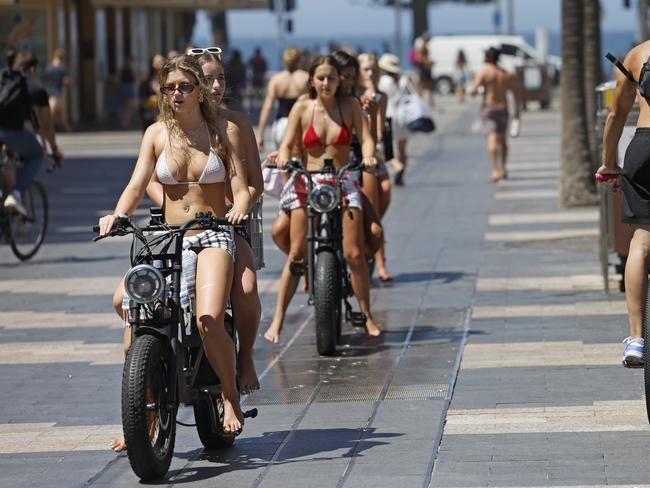
DANGER OF CHILDREN RIDING HIGHPOWERED E-BIKES
One of the factors causing angst among the community is the rise in e-motorbikes and illegally modified e-bikes, some of which can reach speeds of up 80km/h, far above Australia’s legal limit of 25km/h.
Independent Member for Noosa Sandy Bolton is calling for greater awareness and enforcement to curb dangerous and unlawful use.
“When talking about what is causing the community angst, it is not in the majority regarding standard compliant e- bikes,” she said.
“It is either illegally modified e- bikes and e scooters, or e- motorbikes.
“Regarding the latter, a lot of parents are totally unaware that what they were purchasing for their children is actually illegal to ride outside private property and requires registration and the rider to be licensed.”
Under current Queensland regulations, e-bike riders must be over 16 to operate alone and adhere to strict speed limits – 12/km on footpaths and 25/km/h on roads.
However, many high-powered electric bikes and e-motorbikes far exceed these limits. .
Many of these high-powered e-bikes and electric motorbikes are being imported or modified once they arrive in Australia, and are being purchased online or via Facebook Marketplace.
IMMEDIATE ACTION ON E-BIKES NEEDED
In response to the rise in incidents and accidents, Queensland police recently launched Operation Zappo Stoppie to tackle to illegal use of electric vehicles.
The operation resulted in 27 street checks, 31 juvenile warnings, eight infringements, and three bike impounds.
Police also laid 83 charges against 24 individuals, including 21 counts of unlicensed driving, 21 counts of unregistered vehicle use, and two counts of dangerous operation of a motor vehicle.
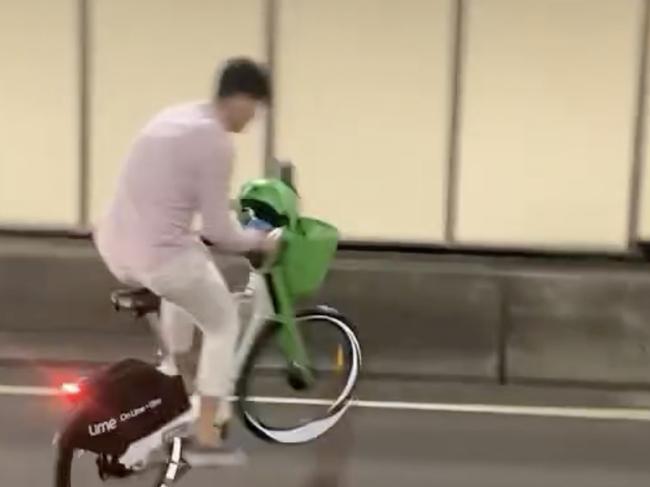
With a new Queensland government now in place, Bolton said she’s raised these concerns with the Minister for Police Dan Purdie and the Minister for Transport and Main Roads Brent Mickelberg, urging immediate action.
“We have raised the issues and continue to take forward suggestions from our first responders and if any innovations are being investigated to alert parents/police regarding speeding of their children.” she said.
However, Bolton said the community also needs to be involved in tackling the issue.
“To assist our police, fellow concerned residents need to learn the rules themselves and report, report, report,” she said.
“If you see any e-bikes, e- motorbikes or e-scooters exceeding these speeds in these areas, or any other non-compliant behaviours, please report this to the police as this will assist them in determining problem areas and will inform future patrols.”
AUSTRALIA ILL-EQUIPPED TO HANDLE E-BIKE SURGE
The University of Melbourne Associate Professor of Urban Resilience and Mobility Milad Haghani argues that in comparison to other countries, Australia cities are ill-equipped to handle the increasing number of e-bikes.
“Research suggests that users of different micromobility modes, such as e-bikes, e-scooters, and regular bikes, can benefit from shared infrastructure,” he said.
“However, in Australian cities, cycling lanes are often fragmented and not designed for the higher speeds of e-bikes. Shared paths with pedestrians or motor vehicles increase the risk of accidents.”
Haghani explained there “is no simple policy solution” and “every dollar spent on one mode of transport is a dollar not spent on another.”
However, he believes prioritising dedicated infrastructure for micro-mobility will help.
“A general approach would be to prioritise dedicated infrastructure for micro-mobility, such as separated bike and e-bike lanes, along with better integration of multi-modal transport hubs, to facilitate switching between different forms of transport,” he said.
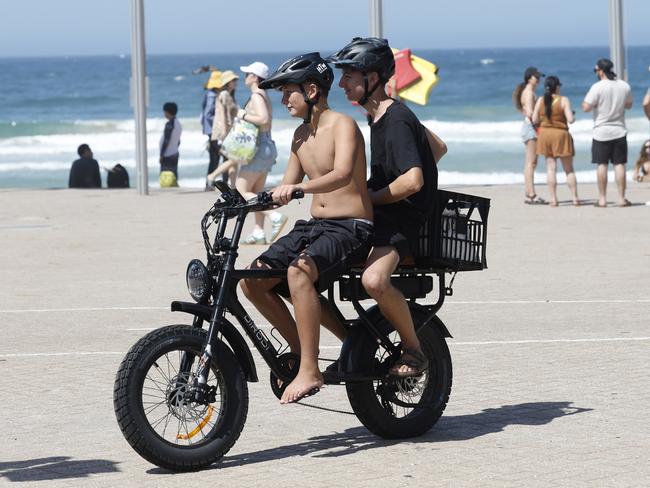
“Developing mixed-use paths with designated lanes that separate high-speed e-bikes from pedestrians and traditional cyclists could also be key to improving safety.”
Infrastructure improvements are important but only go so far, as road space is limited, Haghani explained.
“Effective solutions must pair infrastructure with empirically informed regulations and enforcement, such as speed controls,” he said.
The debate over how to regulate e-bikes has also led to several Australian states banning e-bikes from footpaths, forcing riders into already congested roads and shared bike lanes.
While some experts see this as a step in the right direction, Haghani is cautious about its effectiveness.
“The effectiveness of this solution depends on whether cities have the cycling infrastructure to safely accommodate e-bikes,” he said.
Originally published as ‘Why?’: Horror e-bike injuries revealed




